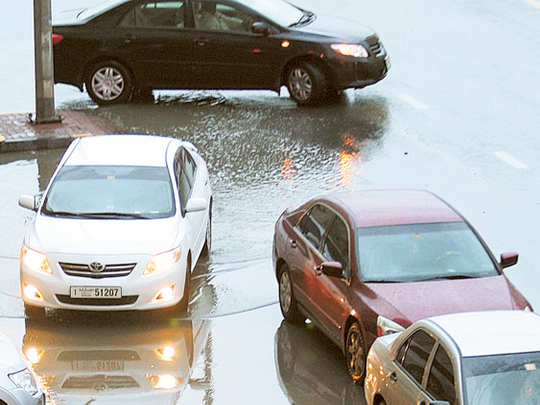
Dubai: It was the high watermark for road accidents on a single day in Dubai and drivers may soon find out they will need to pay a higher motor premium for that. As many as 330 accidents were reported over a seven-hour timeframe on December 17 as an unrelenting mix of heavy rains — 4.6mm in all — and thick fog played havoc on the roads.
The insurance industry has taken notice and the chances are high that motor premiums could finally see some increase as a consequence from the 2013 renewal season. As it is, UAE drivers pay the lowest rates in the GCC — an average of 3 per cent as against the required 3.5-4.5 per cent — on their annual vehicle insurance coverage.
UAE insurers — there are 60 of them — are already paying a steep cost for it. Motor portfolios at the majority of these insurers are in the red, with some of the major names running losses estimated in the millions of dirhams. The writing on the wall has been there for every insurer to see, but one they have consciously failed to read.
Even as rates stagnate, the cost of repairs and spare parts are now ticking along at an annual rate of 15 per cent plus.
According to industry estimates, a realistic annual premium for a vehicle valued at below Dh70,000 should be between 3.75 and 4.25 per cent and for those between Dh80,000 and Dh200,000 it should be between 3.5 and 4 per cent. Vehicles valued over Dh200,000 are always individually rated.
The incidents of December 17 should now compel them to mark their rates closer to what the norm should be. “Generally there is an upward trend in vehicle sales and a related increase in auto insurance sales as well,” said Mustafa Vazayil, managing director at Gargash Insurance. “However, the claims frequency — or the average claims cost— has not gone down during this period.
“Any serious insurer who is concerned about underwriting profit is left with no choice but increase the price to realistic levels or at least in line with inflation. During the third and fourth quarter some insurers had already put up their price and the trend is likely to continue in the first two quarters of 2013.”
But while premiums could yet rise for the volume models, that on high-end ones — those exceeding Dh200,000 — average 3 per cent and will continue to do so. Insurers are quite comfortable with the status quo. In fact, motor premiums on high-end vehicles dropped from 4 per cent plus range in the last year and more.
“It has been a trend that has been there for the last two years or so; there’s been a definite migration of more buyers going for Dh200,000 plus models and insurers have kept premiums on the lower side on them,” said Mahmoud Ahmmad, chief operating officer at Dubai National Insurance & Reinsurance. “The latest stats show these drivers are more likely to be careful on the roads and consequently have better records vis-à-vis claims; they also do better maintenance. The low premiums are actually a reward for their track-records.
“But the yardstick does not apply to all makes and certainly not to sports models — there the many variables are applied when fixing the rate.”












